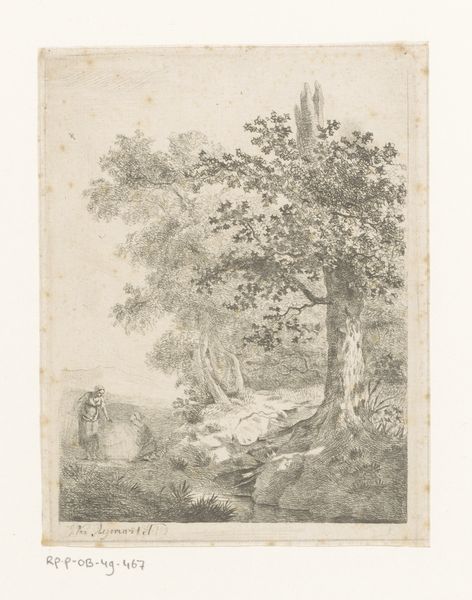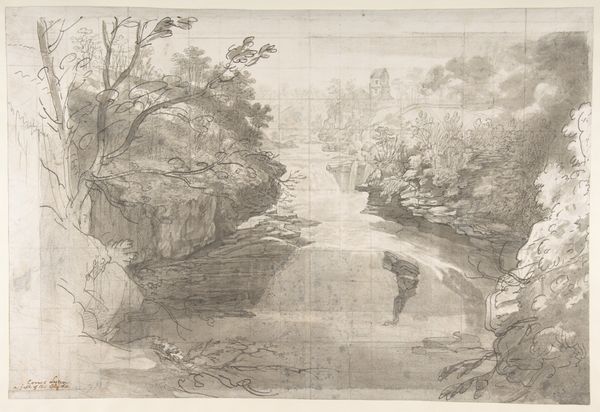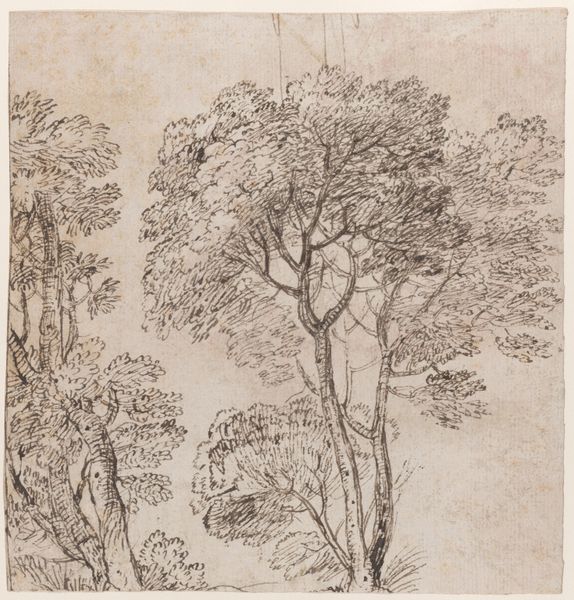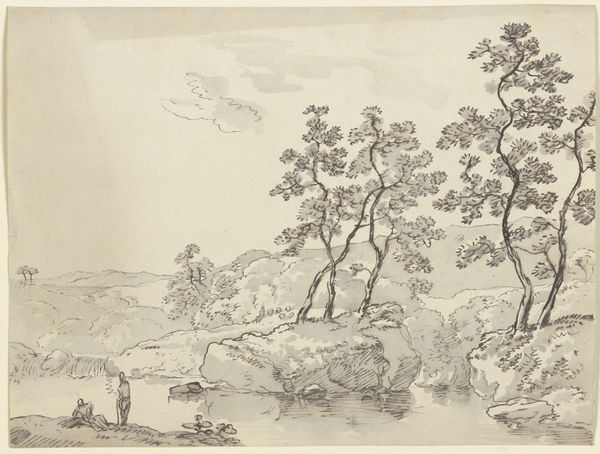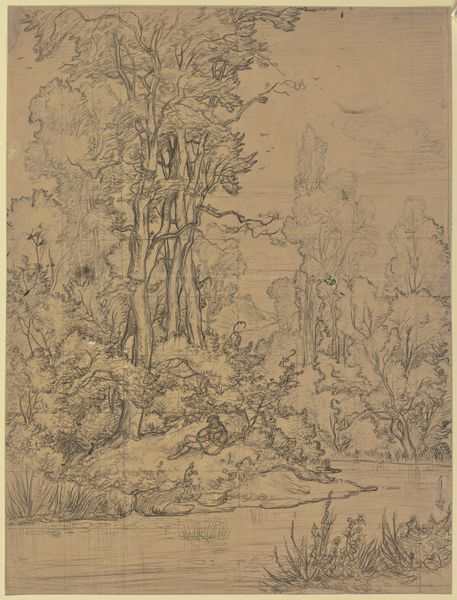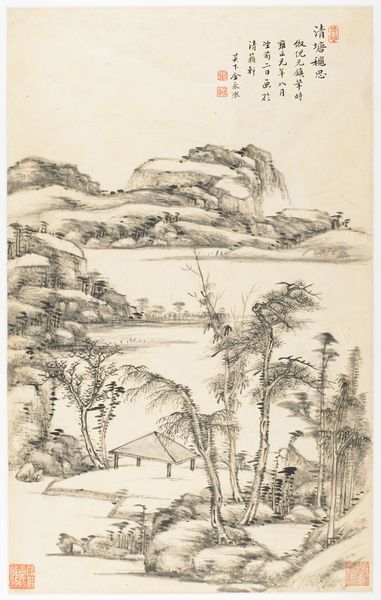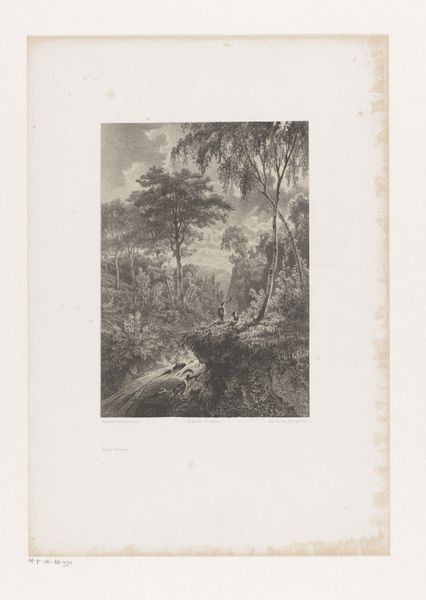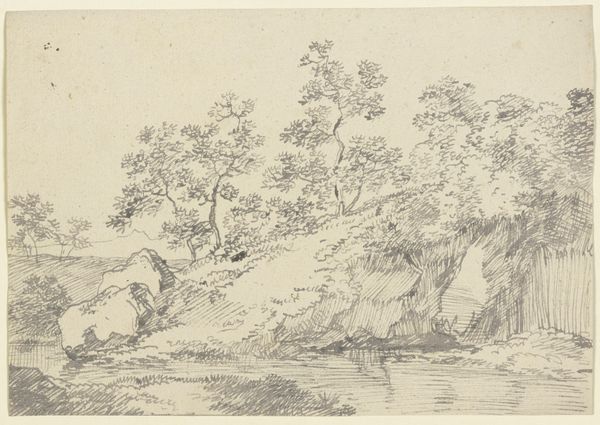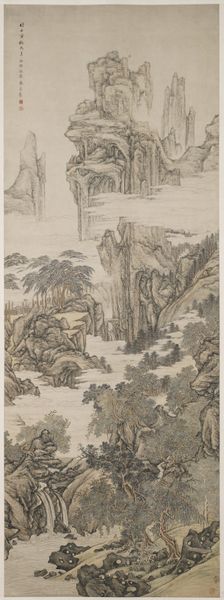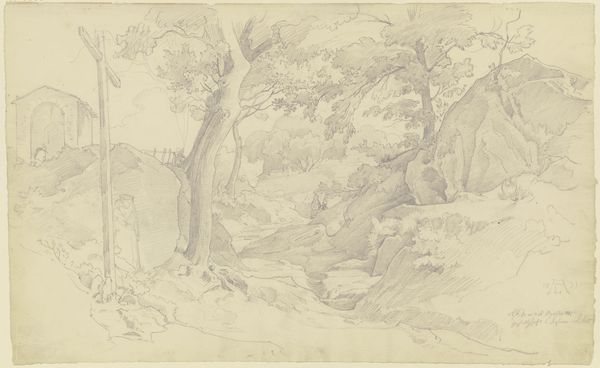
Dimensions: support: 262 x 210 mm
Copyright: CC-BY-NC-ND 4.0 DEED, Photo: Tate
Curator: Francis Nicholson's "A Wooden Bridge over a Ravine in a Wood," housed at the Tate, presents a delicate scene. Editor: It feels rather melancholy, doesn’t it? The subdued palette and skeletal trees evoke a sense of loneliness, of nature in a state of quiet introspection. Curator: Bridges often symbolize transitions, passages from one state to another. Here, the bridge, so tenuously constructed, suggests a precarious crossing, perhaps a journey into the unknown. Editor: The rapid pen strokes and wash technique employed speak volumes. Consider the sheer labor of producing pigments and paper, then the physical act of drawing itself, all to capture this fleeting moment. It's about the process, the making. Curator: Indeed. The bridge might also represent the connection between the earthly realm below and a more spiritual plane above, with the ravine serving as a symbolic chasm. Editor: Fascinating. I see the human intervention, the bridge itself, as a humble mark upon the landscape, a testament to our ability to shape and interact with the natural world using the resources at hand. Curator: Ultimately, this small drawing holds such symbolic depth. Editor: Yes, and thinking about the materials and making reveals the intimacy and labor involved.
